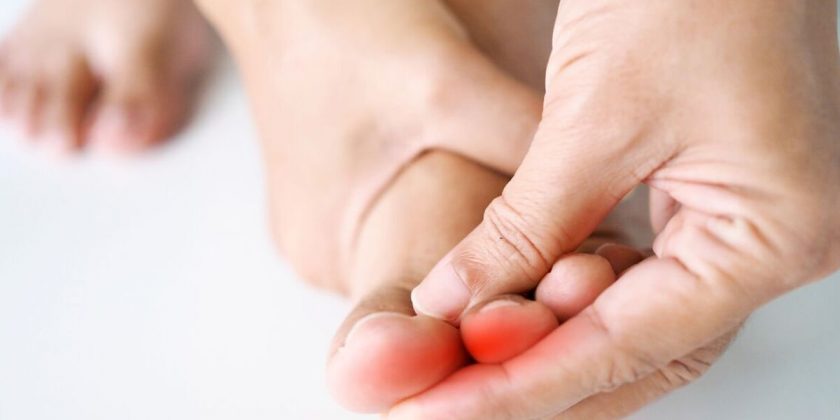
We use your sign-up to provide content in ways you’ve consented to and to improve our understanding of you. This may include adverts from us and 3rd parties based on our understanding. You can unsubscribe at any time. More info
Gout, which is among the most inflammatory of arthritides, is triggered by the deposition of sharp crystals in the joints. The condition has historically been labelled a rich man’s disease due to its associations with meats and fish. Other seemingly healthy dishes have been known to trigger painful flare-ups too, however, due to their high purine content.
One popular breakfast food item with surprisingly high purine content is oatmeal, which contains 50-150 mg of purine per 100 grams.
Though the food doesn’t contain as many purines as other foods like seafood and organ meats, people who have gout should eat no more than two servings per week, cautions VeryWell Health.
The debilitating arthritis is caused by having too much uric acid in the bloodstream; a waste product created when the body breaks down purines ( a type of protein found in many foods and all of your cells).
“Increased levels of uric acid in your blood may occur, if, for example, your kidneys cannot efficiently remove it, you have a rare genetic abnormality, or because your diet and lifestyle increase the amount of uric acid that you produce,” explains the Gout Society.

When elevated uric acid levels are left unmanaged for long periods of time, needle-like crystals start forming in the tissue, resulting in painful attacks that may last for weeks.
“Your diet plays an important role in both causing gout and reducing the likelihood of suffering further painful attacks of gout,” explains the Gout Society.
“If you already suffer from gout, eating a diet that is rich in purines can result in a five-fold increase in gout attacks.”
This is why shellfish and organ meats are ill-advised for gout patients, as both foods are notoriously rich in purines.
Don’t miss…
Two types of oily fish can cause ‘sharp crystals’ to form in joints [INFORMER]
Two supplements tied to a build-up of needle-shaped crystals in joints [INSIGHT]
Three drinks linked to a build-up of ‘sharp crystals’ in the joints [INFORMER]
Other foods containing moderate amounts of purines may include dried peas, beans, legumes, according to the Gout Society.
Therefore, it may be worth moderating your intake of baked beans, kidney beans, soya beans and peas, adds the health body.
It’s important to note that more than 60 percent of the total purines in all cereals, beans, soy legume products, seaweeds, dairy products and vegetables, are adenine and guanine.
The purines found in most animal products, on the other hand, are hypoxanthine.

The latter’s effect on the generation of uric acid appears to be exceptionally stronger than adenine and guanine.
MedicineNet points out: “It’s still important to have a well-balanced diet.
“If you have any trouble doing so with these recommendations, I would recommend working with a dietician to design a plan that fits your preferences and lifestyle.”
What are the symptoms of gout?
The symptoms of gout often come on without any forewarning, making them harder to manage.
The pain and swelling tend to be concentrated in one or more joints, often affecting the joint nearest to the big toe first.
The joints may feel hot and tender to the point where touching them feels unbearably uncomfortable.
Swelling in and around the affected joint may also make daily activities a struggle.
Once symptoms subside, gout attacks can be followed by long periods of remission.
Though years can pass without another flare, attacks tend to come back at some point further down the line.
Source: Read Full Article
